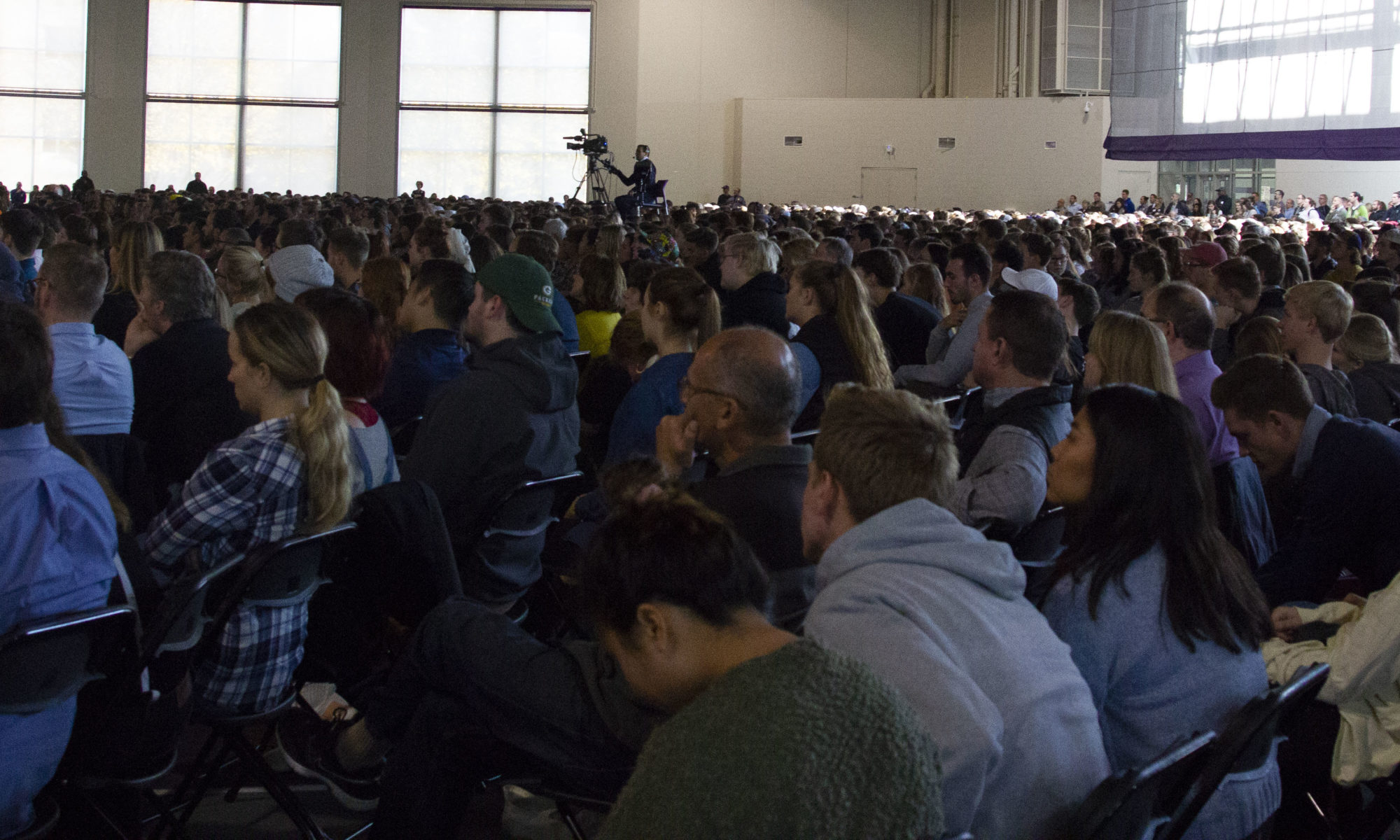One of the largest crowds in St. Thomas history gathered to discuss a collective commitment to a new action plan to combat racism at the university Wednesday afternoon in the field house of the Anderson Athletic and Recreation Complex.
All afternoon classes were canceled in order for students to attend, and St. Thomas facilities management associate Vice President Jim Brummer estimated a crowd of over 5,000.
“Change happens within; it is not going to work to just change the school,” student Sahra Warsame said. “It starts with friend groups and meeting other people and talking about these issues and bringing them to awareness.”
President Julie Sullivan said Wednesday was the first day of a new approach to the university’s mission to promote the common good, citing four of the school’s seven core values.
“We have to send the message so clearly that those who don’t embrace our values don’t want to be here,” Sullivan said.
Sullivan hopes her “Action Plan to Combat Racism,” a combination of short- and long-term goals that aim to continue the “the meaningful steps forward we have taken,” will ultimately make the university a more diverse and inclusive campus.
“As hurtful and as horrible as the hate crime is, I do believe this is a turning point for our university,” Sullivan said after the gathering. “I’m very proud of the number of people who want to be a part of the journey forward.”
In addition to the action plan that the university has released, Sullivan said a student-faculty task force will monitor progress and set benchmarks. Feedback opportunities for students and additions to the curriculum are also part of the university’s plan moving forward.
Sullivan hopes the programs in place help solidify the university’s position.
“I made a commitment that it would be a priority,” she said. “I plan on keeping my commitment, but some people may have to see that over time to be convinced.”
Dale Allender, an assistant professor of language and literacy at California State University-Sacramento was the keynote speaker at the event. He presented a five-step protocol to restrain hateful actions: mindfulness, security, documentation, negotiation and dissemination.
Student leaders met with Allender during a round-table discussion Tuesday to shape his talk and address the concerns of the community.
Topics included elements of colorblind racism, international and transgender student recognition, increasing diversity overall, transparency of resources and oppression in all disciplines.
Allender used the metaphor of a melted box of crayons turning into an absence of color.
“Not seeing color doesn’t make us lose our prejudices,” Allender said.
Allender’s protocol resonated with some students.
“I personally view it [the student protocol] as effective,” student Robel Ponds said. “I think that having documentation on acts of targeted hate and reporting these acts will not only raise awareness but will maybe help with additional prevention for things like this happening again.”
“I must say throughout my four years here, St. Thomas has taken a different approach,” student Sylvester Nwosuji said. “I am interested to see what is going to happen next.”
Wednesday’s meeting followed an Oct. 25 discussion in the Anderson Student Center’s Dorsey Way focused on the Action Plan.
More than 100 students, faculty, staff and community members joined administration members in a three-hour discussion of short-term actions and long-term strategies following the sit-in demonstration against racism on campus.
The Black Empowerment Student Alliance organized the call to action meeting and sit-in protest after a first-year student found a racial slur written on his door in Brady Hall. Earlier in the day, before the discussion, over 500 protesters sat in the Anderson Student Center atrium to denounce racism.
“I saw students after the event last night and they were just energized and it felt like some of that healing was starting,” Student Affairs Vice President Karen Lange said. “I’ve seen students move through this in terms of anger and fear and this felt like some of the healing, and it felt so much better.”
Ava Diaz can be reached at diaz7981@stthomas.edu.
Jack Stan ek also contributed to this report stan5468@stthomas.edu.



